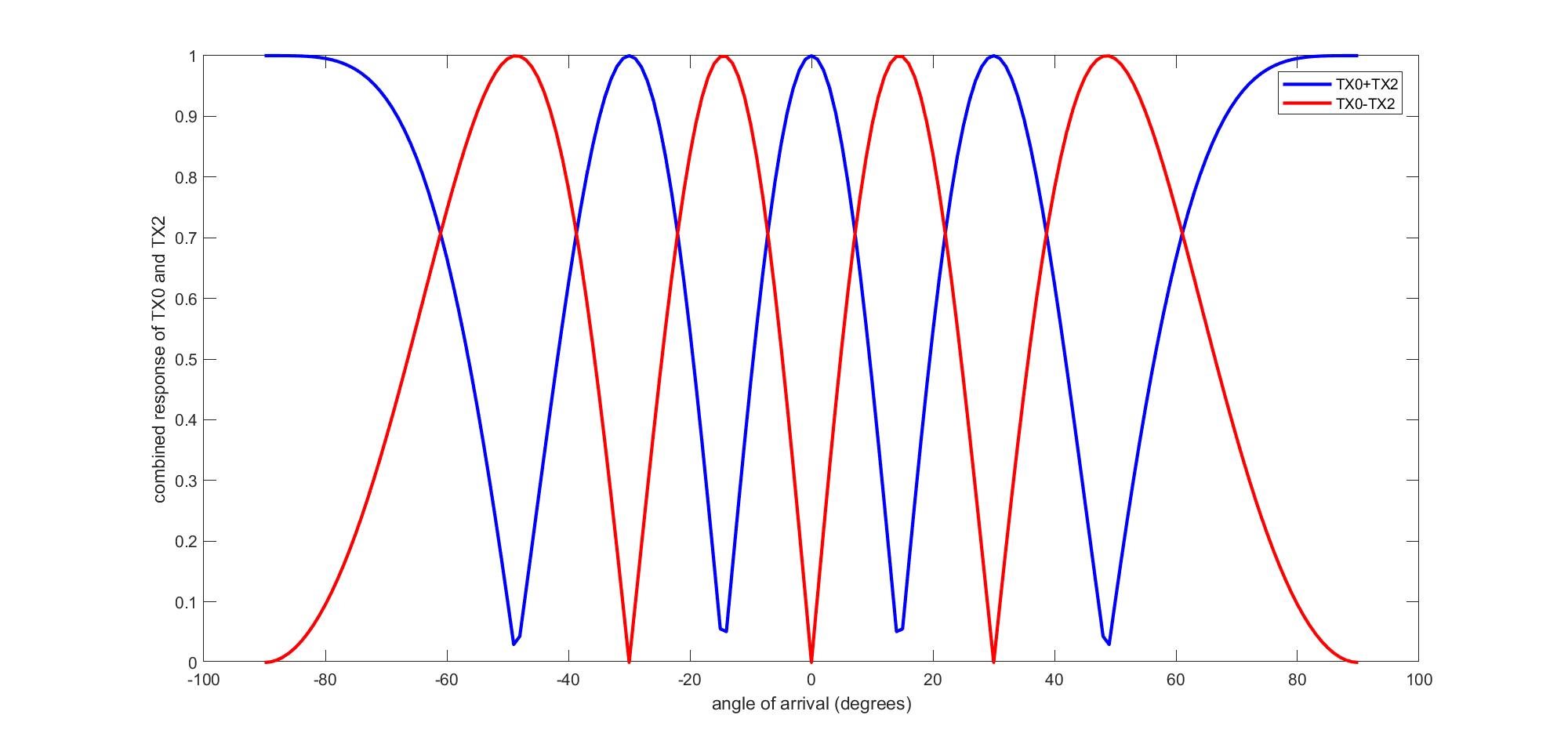Hi TI,
Do you have any diagrams of TX antennas (e.g. TX0 and TX2) in first and second iteration of BPM (when transmitting both at once)? I can imagine the first case where TX0 and TX2 phases are equal.
However, I'm curious about opposite phases of transmitted signal as it could results in something like extreme case of beamforming.
Thank you for your answer, Lukas


